Igneous or sedimentary rocks that have been changed by some combination of heat, pressure, stress, or chemical flux, become metamorphic rocks. The boundary between metamorphic and sedimentary rocks is generally placed at about 200 or 250°C, though deformation is important, too. The boundary between metamorphic and igneous rocks is also somewhat nebulous, but basically any part that melts to liquid can arguably be called igneous. The solid remainder from melting may be called metamorphic, or “restite,” the rest that didn’t melt. The boundaries are mostly historical and based on personal preference or experience. You know it when you see it.
Metamorphic rock textures

A sheet-like, parallel planar arrangement of minerals or other features in a rock. An analogy would be sheets of paper in a book or flat leaves lying on the ground. This rock has a foliation parallel to the top surface, along which it preferentially breaks.
Example: phyllite

Lineation
A parallel-linear arrangement of minerals or other features in a rock. An analogy would be a bunch of pencils held tight in your hand, all arranged parallel to one another.
Example: hornblende schist, with more or less parallel crystals of black hornblende.

Lineation and foliation together
This rock has been cut on three mutually perpendicular planes. The top plane is parallel to the foliation, and a lineation can be seen on that surface. The foliation is approximately horizontal and is best seen on the cut face to the lower-right. The foliation is less visible on the cut face to the lower left, which is perpendicular to the foliation and the lineation.
Example: diorite gneiss.
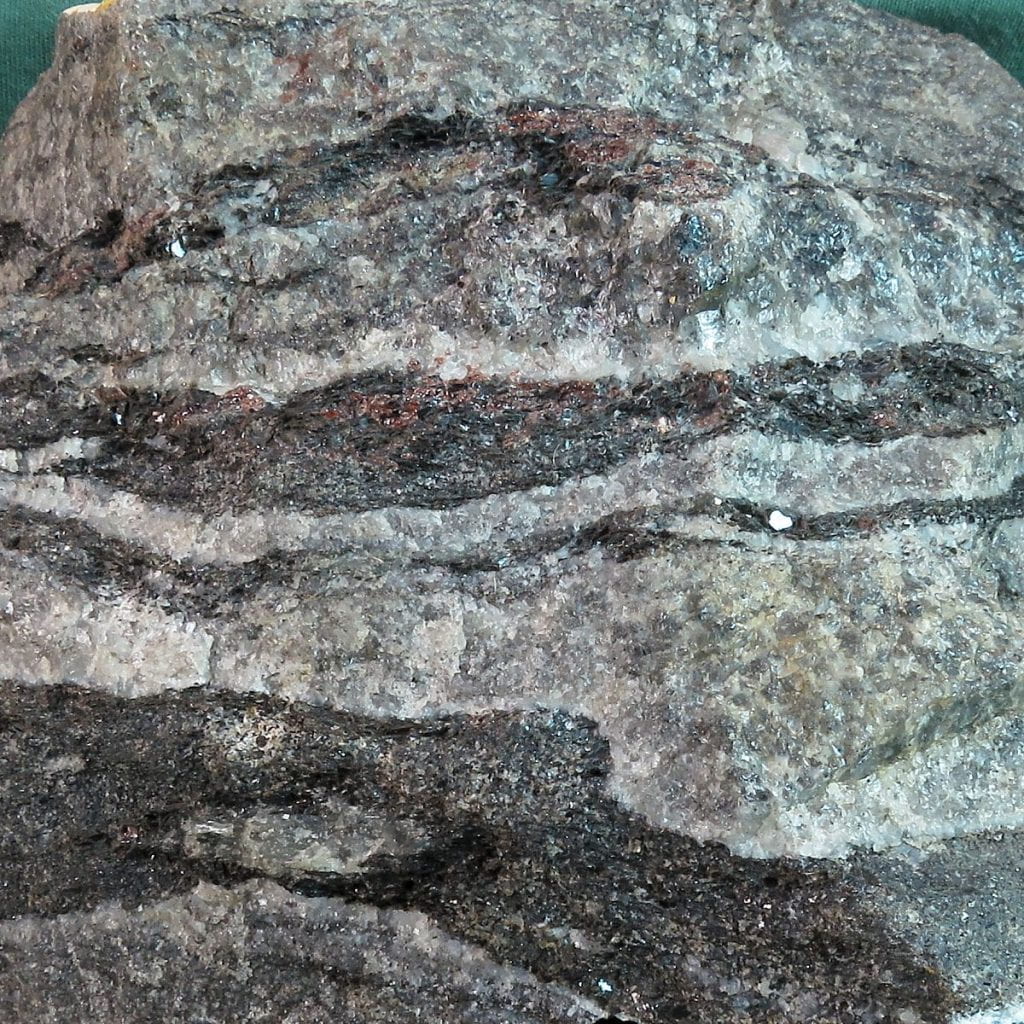
Layering
Flat or folded layers having different mineralogy or mineral proportions. These rocks may have been layered prior to metamorphism, or had original non-layer inhomogeneities that have been stretched-out, or may have acquired later inhomogeneities such as intruded dikes that were stretched-out.
Example: interlayered garnet-amphibolite and quartzite.
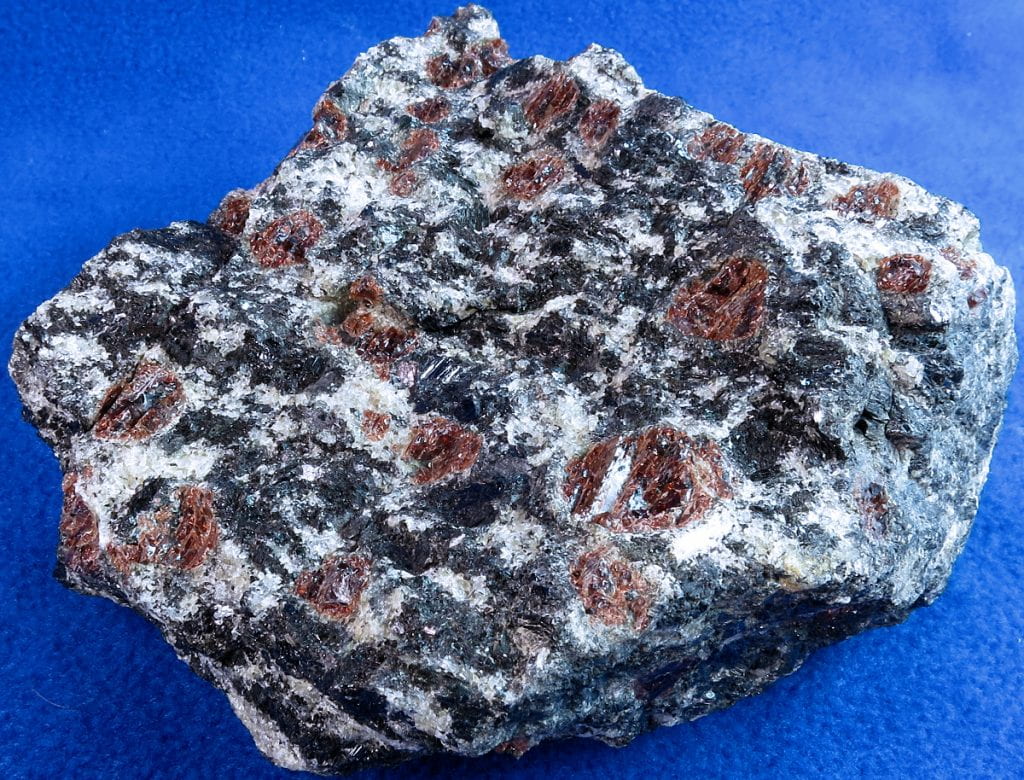
Granulite
A rock having visible mineral grains, but no foliation, layering, or lineation.
Example: garnet amphibolite, a high-temperature, moderate-pressure metamorphosed basaltic rock.
Typical metamorphic rock types defined by grain size and foliation
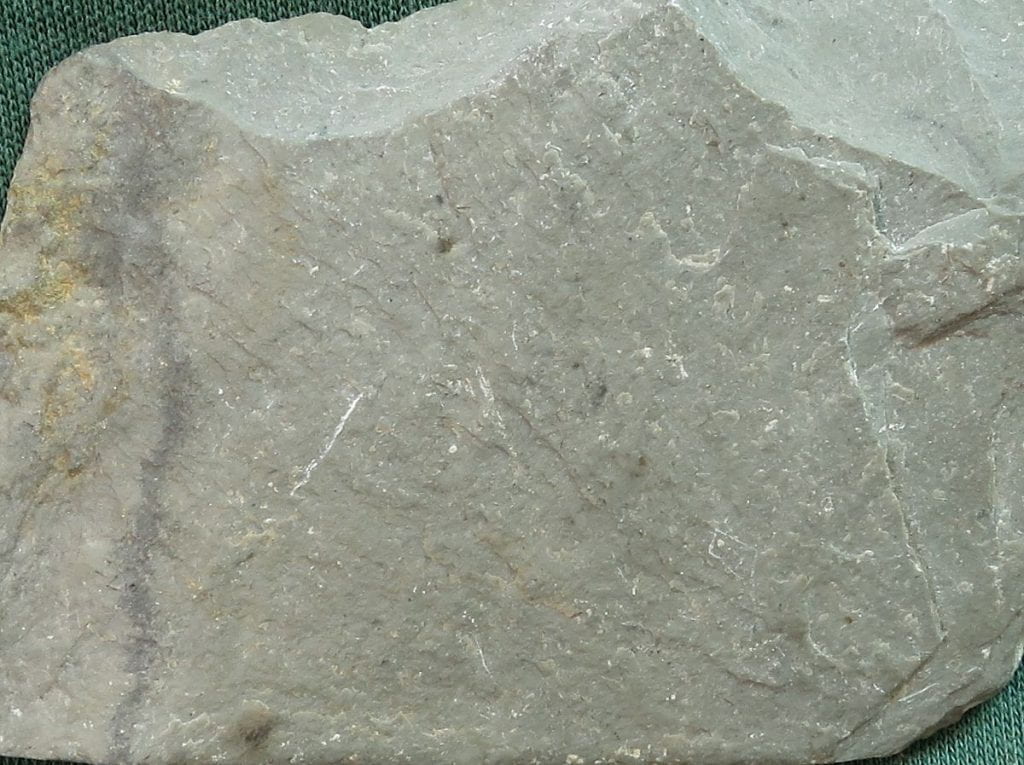
Slate
A very fine-grained, well-foliated rock in which the grains are mostly too small to see even with a hand lens or microscope. Sheet silicates are abundant (typically muscovite and chlorite), and their parallel alignment is what give slate such good cleavage. Slate colors are determined by three major coloring agents: red from hematite and black from carbon, and lacking either of those, the color is usually greenish-gray from chlorite.

Phyllite
A fine-grained, well-foliated rock in which the grains are barely visible with a hand lens as shiny flakes. Sheet silicates are abundant (typically muscovite and chlorite), and quartz veins may be visible. Although individual crystals are generally too small to identify, the overall effect of grain size and foliation gives the rock a satin-like reflectivity.

Schist
A medium- to coarse-grained, foliated rock in which the grains are easily seen and identified by eye or with a hand lens or microscope. Sheet silicates are abundant (typically muscovite and biotite). Large crystals of garnet and other minerals may be visible, though in this example the large crystals are mostly biotite.
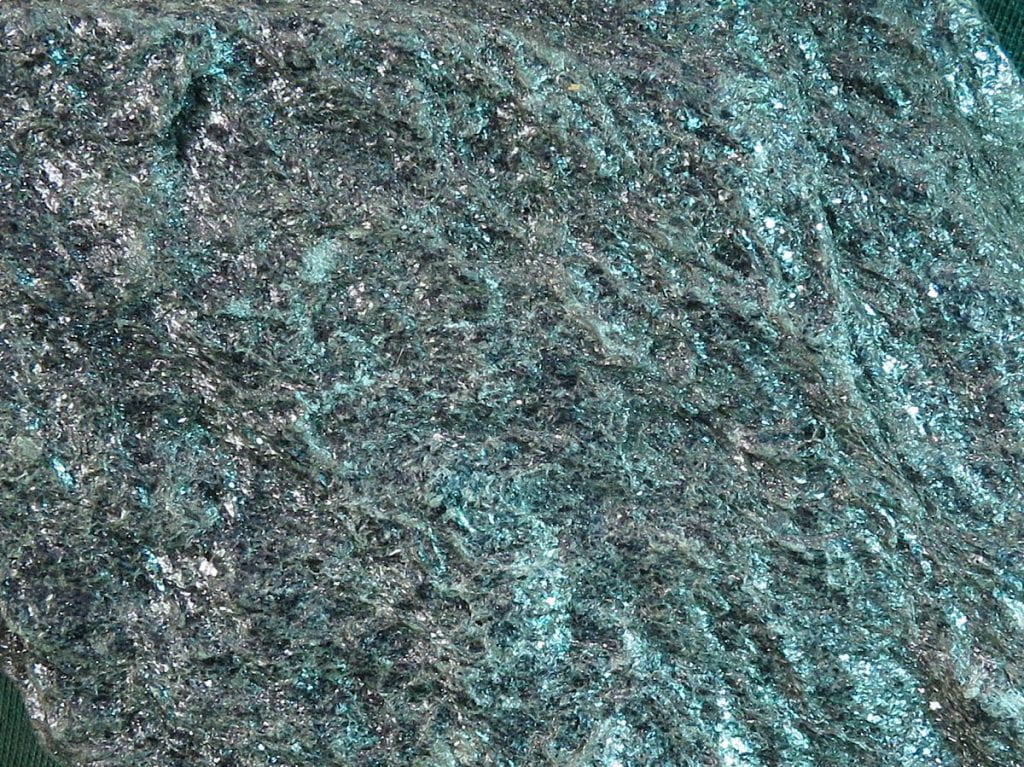
Chlorite schist
In texture, this is a schist just like the one above: well-foliated and mostly made of sheet silicates (chlorite, in this case). The schist texture is then given a prefix to indicate the important mineralogy. Similarly, the schist immediately above might be called a muscovite-biotite schist, because of its two dominant minerals.
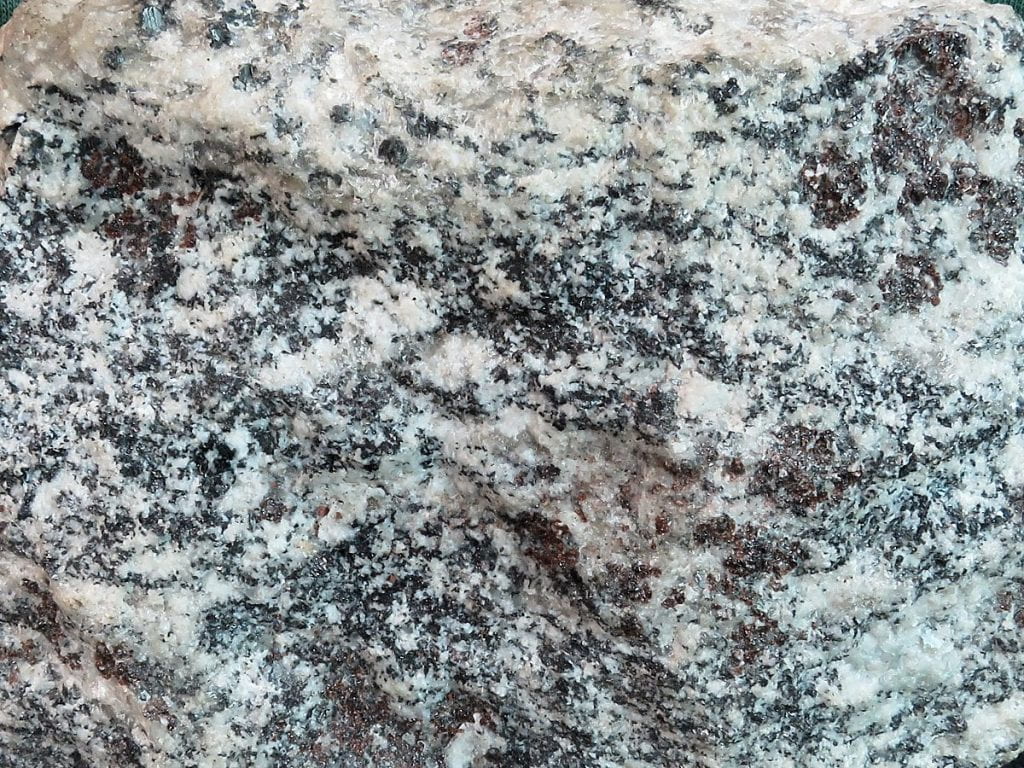
Gneiss
A medium- to coarse-grained, generally mica-poor rock having poor foliation. Layering may be prominent, like in the layering example, above. Minerals are easily visible and identifiable by eye or with a hand lens or microscope. The dominant minerals are feldspars and quartz. This one also contains black biotite and dark-red garnets.
Porphyroblasts: nice, big crystals
You should recall that some igneous rocks had large crystals set in a much finer-grained matrix. Those crystals grew from a liquid, and are called phenocrysts. Metamorphic rocks can have similar, well-formed large crystals in a finer-grained matrix, but they grew in solid rock and are called porphyroblasts.
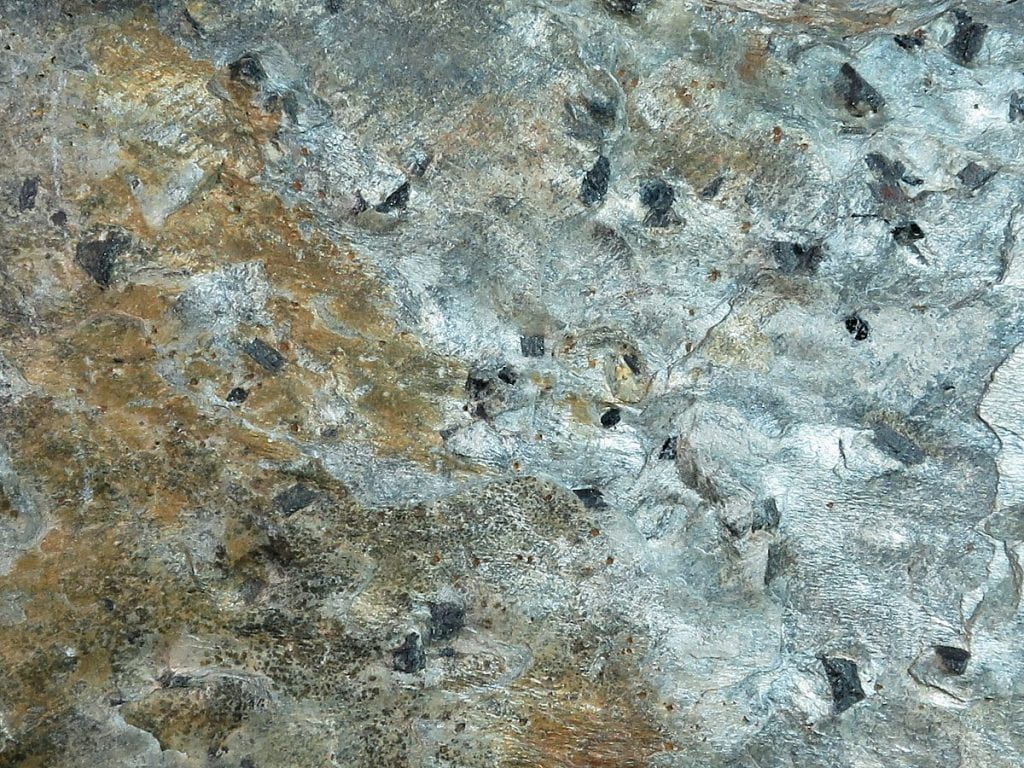
Chloritoid phyllite
This otherwise unremarkable phyllite has porphyroblasts of the black mineral chloritoid. Although the name chloritoid makes it sound like it is similar to chlorite, they actually have little in common in a hardness or crystal structure sense.

Ankerite schist
This is a fine-grained schist that has (or had) relatively large, diamond-shaped crystals of the iron-calcium carbonate mineral ankerite. Weathering, however, has dissolved away most ankerite, leaving rusty, diamond-shaped pits. Oh, well.
In a side note, ankerite in rocks surrounding water wells can make pumped water rusty.

Garnet schist
This is another fine-grained schist, or maybe a phyllite, with porphyroblasts of garnet. The rust-brown pits are where garnets have fallen out.
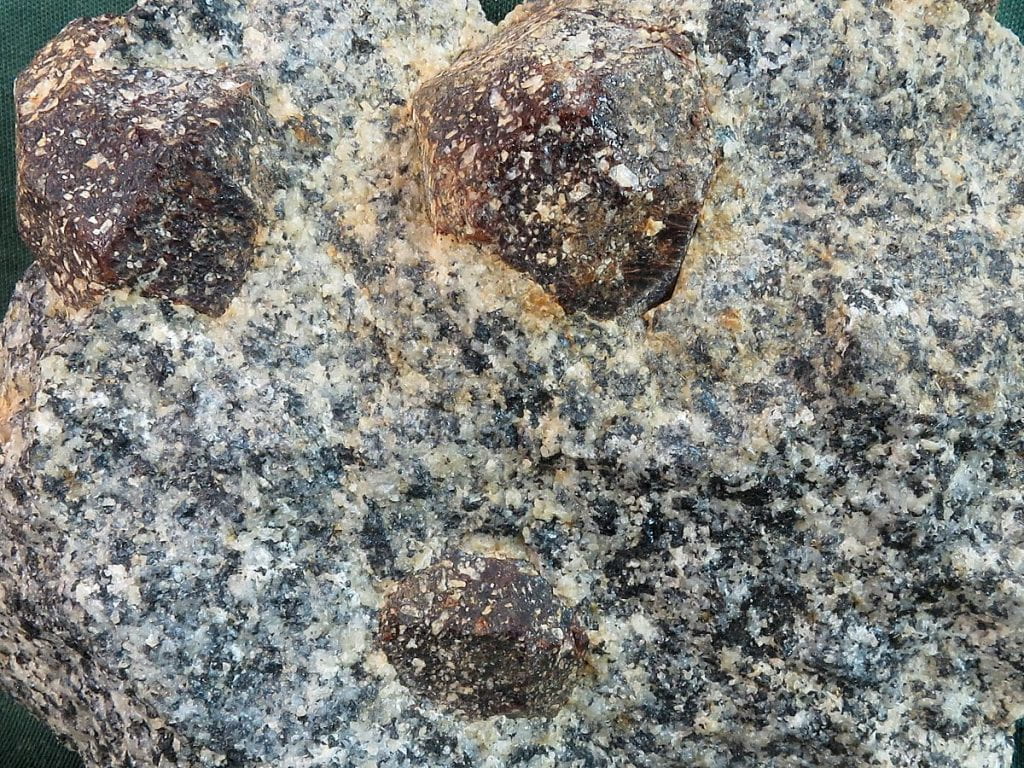
Garnet gneiss
This is a diorite gneiss, having the chemical composition like the igneous rock, and mineralogy like diorite, also, except for the garnets. The large garnets grew in the solid state from garnet-forming chemical reactions. The garnets are loaded with inclusions of white plagioclase.
Augen, large crystals that have been deformed
Igneous rocks may start out with phenocrysts, or metamorphic rocks may have porphyroblasts. If those rocks are then deformed during metamorphism, the large crystals can smear-out to form eye-shaped lumps called augen. Indeed, the term is derived from the German word for eye.

Granitic gneiss
This gneiss has the mineralogy and chemical composition of a granite. It also has large augen of orthoclase.

Granitic gneiss
This one is somewhat finer-grained that the gneiss immediately above, and has smaller augen of orthoclase and albite.
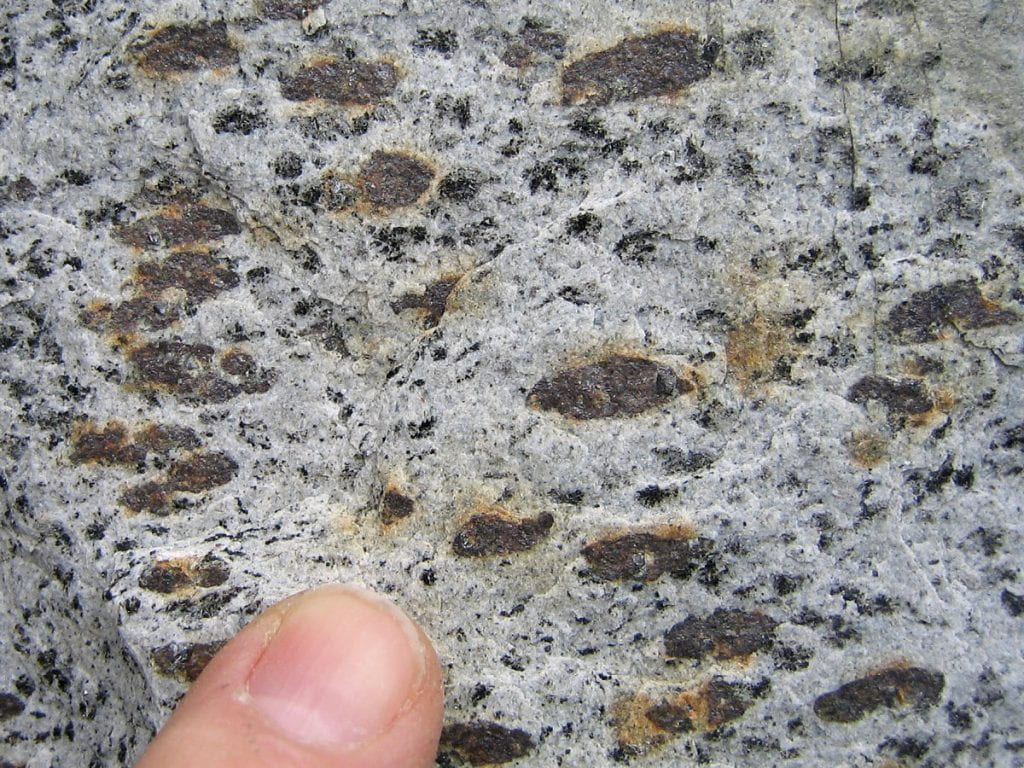
Felsic gneiss
This rock is mostly made of felsic minerals (quartz, orthoclase, albite, minor biotite), probably derived from a volcanic ash bed that was deposited in a marine environment. It has augen made of pyrite. The pyrite is somewhat weathered, making them a bit rusty-looking.

Garnet peridotite
Peridotite is rock made mostly of olivine and pyroxene. This one is from the Earth’s mantle. Most of the mantle is metamorphic rock, and this one contains a huge garnet augen, as well as lots of little, rounder garnets in the matrix.
Marble: metamorphosed limestone
Any sedimentary or igneous rock can become metamorphosed. Those illustrated above are all from clastic sedimentary or igneous rocks. Here are some metamorphosed limestones.
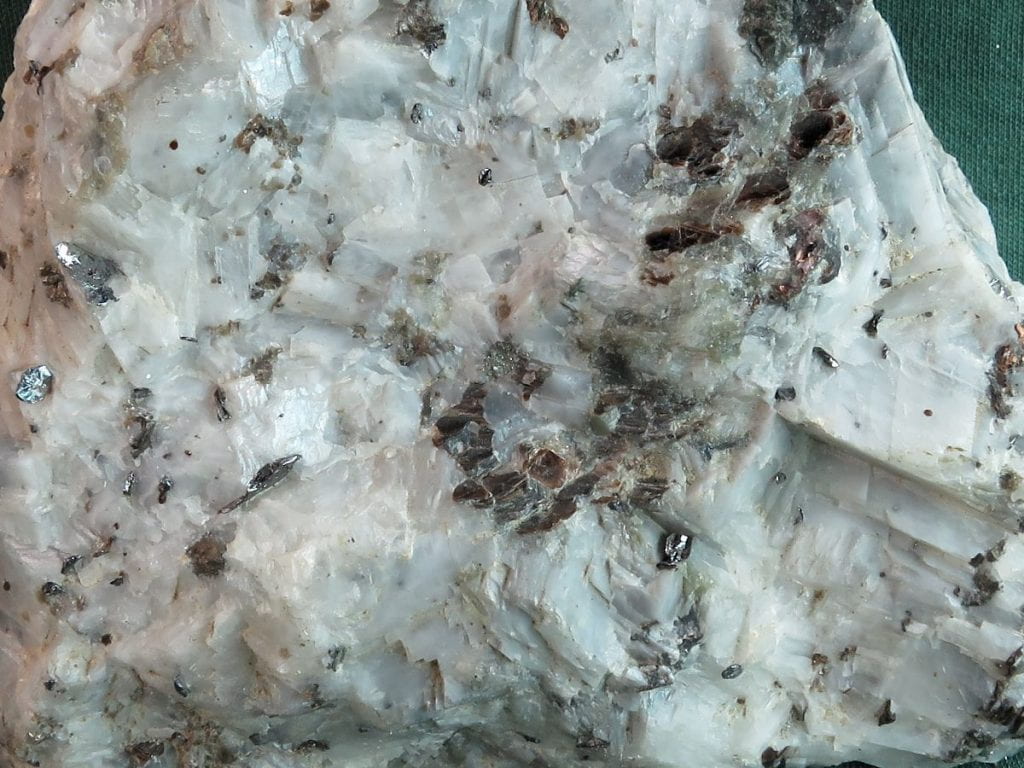
Marble with biotite and graphite
Marble is usually is coarser-grained than limestone, because calcite recrystallizes so easily after deformation ceases. New minerals grow under metamorphic conditions, and this one has graphite (the small silvery flakes) and biotite (the larger, darker flakes below and to the right of center).

Marble with olivine
This marble also has coarse-grained calcite, and lots of green olivine. The dark things are pyroxene.
Quartzite: metamorphosed sandstone
Quartz-rich rocks are relatively common as sediments, including most sandstones and some conglomerates. Such rocks may indicate a source area rich in quartz, or extensive weathering and removal of non-quartz material. Though the metamorphic rocks are made almost entirely of quartz (quartzite), small differences in composition and original grain size can lead to very different-looking rocks.

Quartzite, deformed sandstone
This is a metamorphosed, very clean quartz sandstone. The pink color comes from traces of hematite, which may once have been the cement that held the sand grains together. The quartz grains are about a millimeter across, but they are hard to see.
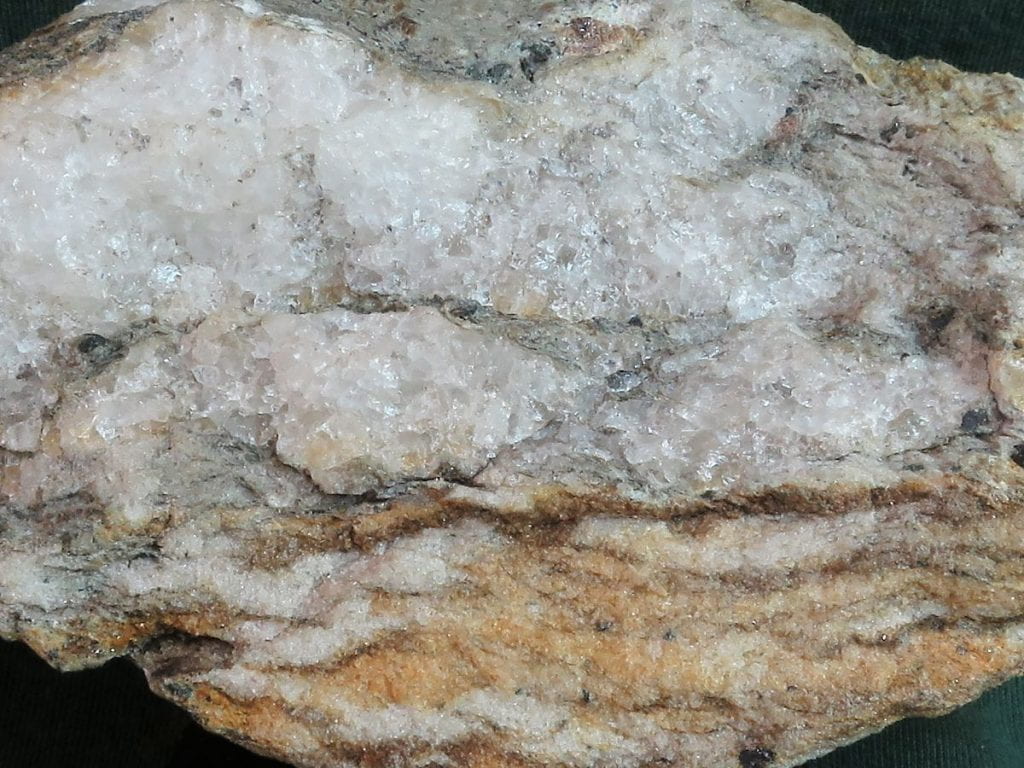
Quartzite, deformed conglomerate
The same kind of rock with a very different look. This is a metamorphosed quartz pebble conglomerate. The original pebbles were of different sizes, and have been smeared-out. Weathered pyrite has provided the rusty stain.
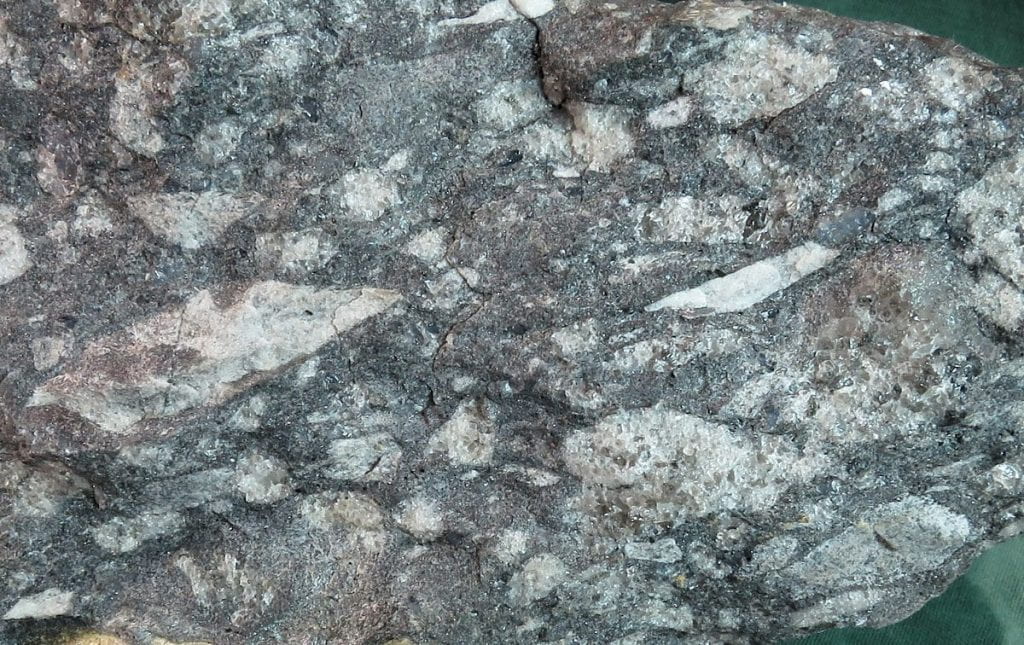
Quartzite, deformed dirty conglomerate
The original conglomerate pebbles are easy to see, mostly white in a gray matrix. The matrix is gray because it originally contained some clay and maybe organic material. That has now metamorphosed to a variety of dark minerals that, mixed with quartz, looks gray. The deformed pebbles have elongated shapes, some of which are still clearly angular, which indicate very short transport distance.
Folding and other things

Close view of a saw-cut surface of folded, layered gneiss.
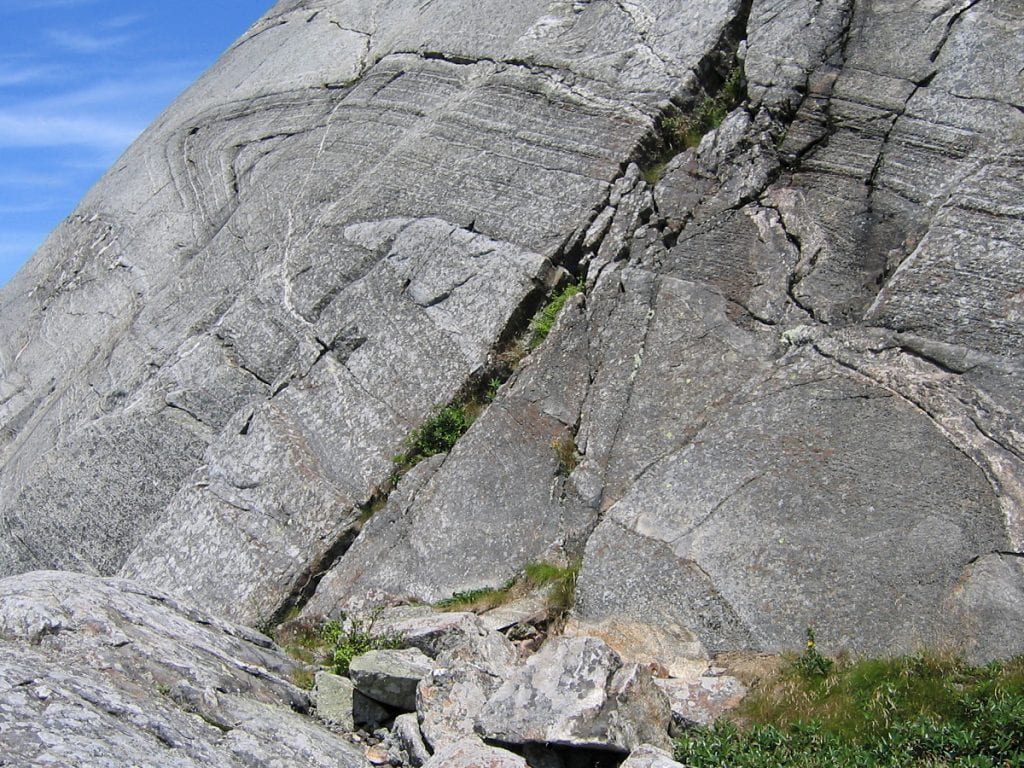
These are folded schist and quartzite layers, on the south side of the summit of Mt. Monadnock, New Hampshire. To the upper-right there is a granite dike cutting through the layers.

This is a complexly folded gneiss. It was originally a diorite. During metamorphism the layers formed, and they were folded. White dikes intruded the gneiss, cutting the layers. The rock was folded again, folding the dikes and the host gneiss together. The geologic sequence is determined from crosscutting relationships.
